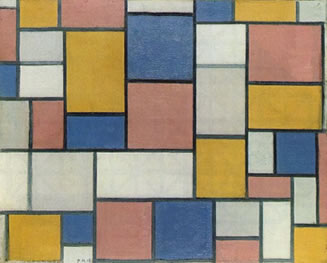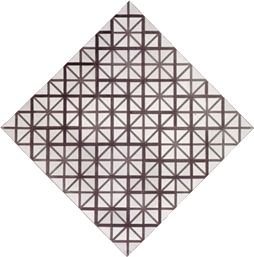
|
|
|
|
|
|
|
|

Composition with Color Planes and Gray Lines 1, 1918 |
|
|||

Composition with Grid 3: Lozenge composition, 1918 |
1918-1919: grid on checkerboard compositions. The invention of the diamond format. |
|||

Composition with Grid 9: Checkerboard Composition with Light Colours 1919 |
|
|||

Composition B, 1920 |
1920-early Classic phase, with planes of red, yellow, blue and grey divided by grey lines. |
|||
|
Throughout his lifetime Piet Mondrian moved back and fourth from Holland to Paris onto to London and finally New York, moving either because of his need to place himself within a certain social complexity that would evidently also change painting style, or moving because of the treat of foreshadowing war thru both WWI and WWII. Along his way he acquired a language of many styles, evolving his own work with an incredible lineality. Learning to paint in a style of lassic Dutch realism, he painted portraits, still life’s, and naturalist landscapes. He learned new styles with incredible speed and understanding, often painting better than his colleagues and even masters. His work quickly moved thru luminist, and divisionist phases to abstract expressionist, pointillist, and cubist,finally ending with his well-known primary colored neoplastic phase, or new image phase. Mondrian was also a very eloquent writer, and visionary, writing several articles on his theories of the combining of all the arts. He wrote of a new world where all the arts including: painting, sculpture, architecture, music, theater would combine as one entity called the new image, the neo-plastic (neoplasticism). He was partly responsible for creating De Stijl (the style) magazine, a collective of mainly artists and architects who wanted modernism to become a well-known international idea and practice. Mondrian’s work would help from design schools such as the Bauhaus, and end up having a tremendous effect on the arts from graphic design to fashion and architecture. These images are available for use with correct reproduction rights. |
||||
| © 2002—2024 Mondrian/Holtzman Trust. All rights reserved. | Web Design by Enterprise Computer, LLC |